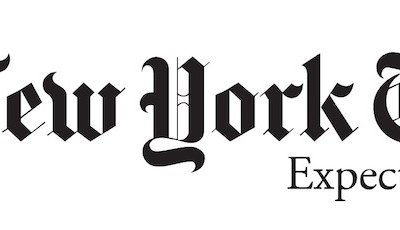New York Times next victim of the digital revolution?
May 07, 2011
on
on

The New York Times, once the pinnacle the news industry, is losing confidence. And in good twenty-eleven fashion it does so publicly.
The New York Times has won the most pulitzer prizes by far and is considered an agenda setting news institution. But her mighty history does not ensure her a place in the future. The number of copies sold is, as with so many newspapers, declining and has been doing so for years. The culprit is the free information highway that brings breaking news faster and for free. At least, that was the competition the newspapers were up against back during web 1.0. Now it's gotten a lot worse. Crowd-sourced journalism, live eye-witness twitter reports, leak sites. And apps like Flipboard gathering it all in a nice lay-out to flip through on our Ipads. Who needs a daily newspaper anymore?
This is the question addressed in the documentary Page One: Inside The New York Times by director Andrew Rossi. Rossi spends an entire year in NYT's newsroom and takes us with him. He is there when Wikileaks releases its Collateral Murder video on Youtube which sparks existential questions amongst the NYT journalists. Wikileaks posses breaking news but it does not need a newspaper to get its story out. It simply puts it on the web and waits for the world to find it.
The subsequent release of the Afghan and Iraq War Logs are often compared to the Pentagon Papers leaked by Daniel Ellsberg in 1971. Excerpts of which were first published by the New York Times. But that comparison immediately reveals the change in information distribution and the shifting role of newspapers. The Pentagon Papers were suspended from publication by the Nixon administration. The NYT had to fight a battle before the courts to win the right to publicize. It won that battle on account of the First Amendment. Thus cementing its name as a bulwark for free speech.
But no one could stop the War Logs from entering the public domain. It had spread all over the Net before the Obama administration even knew what hit them. Today technology is the bulwark of free speech. So where does that leave the New York Times? Watch the documentary. And just this once, don't download it before it even hits the theaters this summer.
Page One: Inside the New York Times: On the potential effects of Wikileaks on traditional media.
Page One: Inside the New York Times: Official trailer
The New York Times has won the most pulitzer prizes by far and is considered an agenda setting news institution. But her mighty history does not ensure her a place in the future. The number of copies sold is, as with so many newspapers, declining and has been doing so for years. The culprit is the free information highway that brings breaking news faster and for free. At least, that was the competition the newspapers were up against back during web 1.0. Now it's gotten a lot worse. Crowd-sourced journalism, live eye-witness twitter reports, leak sites. And apps like Flipboard gathering it all in a nice lay-out to flip through on our Ipads. Who needs a daily newspaper anymore?
This is the question addressed in the documentary Page One: Inside The New York Times by director Andrew Rossi. Rossi spends an entire year in NYT's newsroom and takes us with him. He is there when Wikileaks releases its Collateral Murder video on Youtube which sparks existential questions amongst the NYT journalists. Wikileaks posses breaking news but it does not need a newspaper to get its story out. It simply puts it on the web and waits for the world to find it.
The subsequent release of the Afghan and Iraq War Logs are often compared to the Pentagon Papers leaked by Daniel Ellsberg in 1971. Excerpts of which were first published by the New York Times. But that comparison immediately reveals the change in information distribution and the shifting role of newspapers. The Pentagon Papers were suspended from publication by the Nixon administration. The NYT had to fight a battle before the courts to win the right to publicize. It won that battle on account of the First Amendment. Thus cementing its name as a bulwark for free speech.
But no one could stop the War Logs from entering the public domain. It had spread all over the Net before the Obama administration even knew what hit them. Today technology is the bulwark of free speech. So where does that leave the New York Times? Watch the documentary. And just this once, don't download it before it even hits the theaters this summer.
Page One: Inside the New York Times: On the potential effects of Wikileaks on traditional media.
Page One: Inside the New York Times: Official trailer
Read full article
Hide full article


Discussion (0 comments)